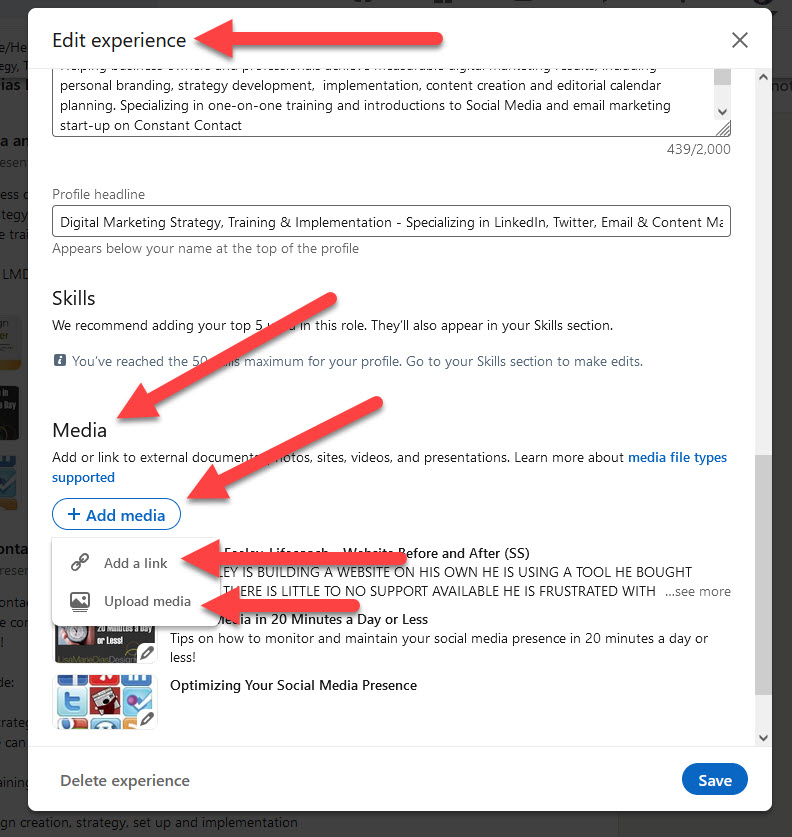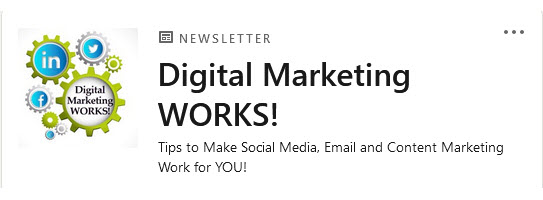
Getting an article published in a reputable magazine or blog can be a great way to establish your expertise and to grow awareness of your company. Be sure to follow up, after a post goes live, by socially sharing to expand visibility and extend shelf life. Here is a brief checklist of what to do after you have an article published, to get the most mileage out of your content.
Here is a brief checklist of what to do after you have an article published Click To TweetOver the past month or so, 5 of my clients have had the good fortune of having articles published in major print and digital publications and of being interviewed on reputable podcasts. While the tactics you use will depend upon the venue of publication and the extent of your social footprint, here is a checklist of what to do after you have an article published, to take to make the most of your accomplishments:
Via Email:
If your comments were used as a source or you were cited in an article by someone else, start with a simple ‘Thank you’. Yes, it may sound very ‘old-school’ but it can be a great way to make a lasting impression and an authentic connection. Thank them for using your comments and offer your services, as an expert in this industry, for any future articles they may write. You may want to offer OTHER articles, that you have already written, to them for future posts or ask them if they would consider you as a regular columnist. Ask them if there are any topics they need covered. Be a useful resource to them!
If your book was reviewed, you may want to offer them a copy to give away to their audience, which may get your review some additional mileage and your book some extended exposure.
Be sure to include all your contact info and social links (Twitter, LinkedIn, etc) and a link to your blog.
If you were not corresponding via email, you can usually find an email address as part of the journalist/ blogger/ podcaster’s bio.
If your book was reviewed, you may want to offer the reviewer a copy to give away to their audience Click To Tweet
Via LinkedIn:
Find and Invite the journalist/ blogger/ podcaster to link – say ‘other’ on the invitation category and use their email address
Personalize the invitation to say you want to keep in touch (you can thank them again but it may seem excessive)
When they accept, add a TAG that says they are a journalist/ blogger/ podcaster who has shared your content on Huff Po and/or on their blog, etc. This will be helpful next time you have some valuable content to share.
Share the link to the post/ interview/ podcast via a LinkedIn status update. You can be personal “I am so proud to have been cited as an expert in this….” or use a captivating intro “The 5 most effective ways to use…” – whichever style you choose, be sure to link out to the article. I do not usually recommend linking out to anything that is not owned by you, but this is one time where outbound links are appropriate. Especially if it it to a prestigious publication like the Harvard Business Review or the NY Times.
If you have a company page, update your status there as well. with a similar post and link.
Via Twitter:
Find and FOLLOW them (click the follow button) on Twitter. Look on their bio to see if there is a link to their Twitter profile. If not, log into Twitter and search their name.
LIST them (create a list of reporters/ bloggers and add them to it – make it a PRIVATE list)
Scroll through their stream to see if you can find a tweet about the article you were featured in and RETWEET that post (click the little chasing arrows icon below the post)
You can also go to the left column, under their photo and click on the blue button that says ‘tweet to so and so’ – a window will pop up where you can compose a tweet. You can use this to thank them again, publicly or to link to the post. If you START with the @tag, it will only be visible to the recipient, but if you INCLUDE the @tag in the body of the tweet, the recipient will be notified but it will be published as a tweet.
Here is an example we used with a client who had their book reviewed in the Huffington Post “Thank you @StartupPro for helping #entrepreneurs bridge the Knowing – Doing Gap! http://blog.startupprofessionals.com/2014/09/entrepreneurs-need-to-bridge-knowing.html
Note that you may want to include relevant industry hashtags in your Twitter posts to have them found/seen by people who are not already following you.
Via Facebook:
LIKE the journalist/ blogger/ podcaster if they have a Business Page. If not, I do NOT recommend ‘friending’ them, if they only have a personal profile.
Similar to what you did on LinkedIn, share the link to the post/ interview/ podcast via a Facebook status update on your Business Page. If you only have a Personal Page and/or you use your Personal Page for business, you can post this update there as well.
Via G+:
Add the journalist/ blogger/ podcaster to a circle – create a circle for these resources if you do not already have one.
Similar to what you did on LinkedIn, share the link to the post/ interview/ podcast via a G+ status update on your Business Page. Since you have a lot more space on G+, you may want to excerpt some of the article or add some commentary.
Keep in mind that it is best to tailor the posts to each platform, adding hashtags to Twitter, adding length to G+ and varying them where possible.
Via Your Newsletter:
If you have a newsletter, you may want to add a brief statement plus a link to the article as well. This can go a long way to underscore your expertise.
Once you have taken care of these steps, get back to writing! Good luck and keep up the good work!








